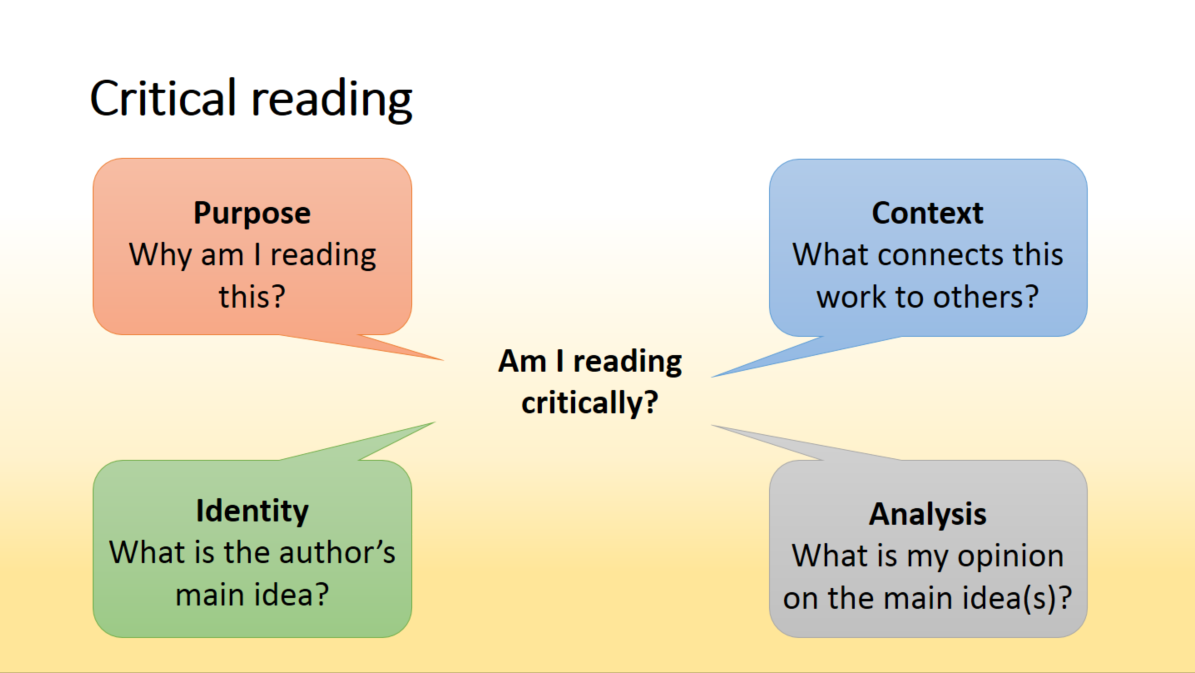
Critical Reading

Techniques of critical reading.
1. Survey – Know what you’re looking for!
Before you crack open your book, take a few minutes to read the preface and introduction, and browse through the table of contents and the index. This initial scan will tell you the main topics of the text, the author’s particular approach to the subject (i.e., why he/she wrote a text on the subject when there are probably 20 others on the market), and what the basic organizational structure will be.
Repeat a similar process before each chapter. Read all the titles and subtitles, and study any pictures, charts, or graphs. If there are any, read the summary at the beginning or end of the chapter and study any questions. This gives you the “big picture” — a framework of the main ideas that will help to hold the details together later. It’s almost like warming up a car.
2. Ask questions
Before beginning to read, take the subtitle of the section and turn it into a question. For example, if you’re reading part of a chapter called, “Functions of the Spinal Cord,” ask yourself, “What are the functions of the spinal cord?”
3. Read actively
You then read. Not passively sliding your eyes over the words, but actively engaging in the text and trying to find the answers to your questions. But be careful you don’t end up skimming for the answer and missing other important information.
4. Respond to your own questions
Once you’ve read the section, close the textbook and answer your question, either orally or on paper, in your own words.
5. Record key concepts
Once you understand the material and can summarize it in your own words, you need to record the information in some way. Color code, highlight, make markings in the text or take notes. Find the method that works best for you and stick to it. It’s critical to read and understand the material first, and then go back and record.


